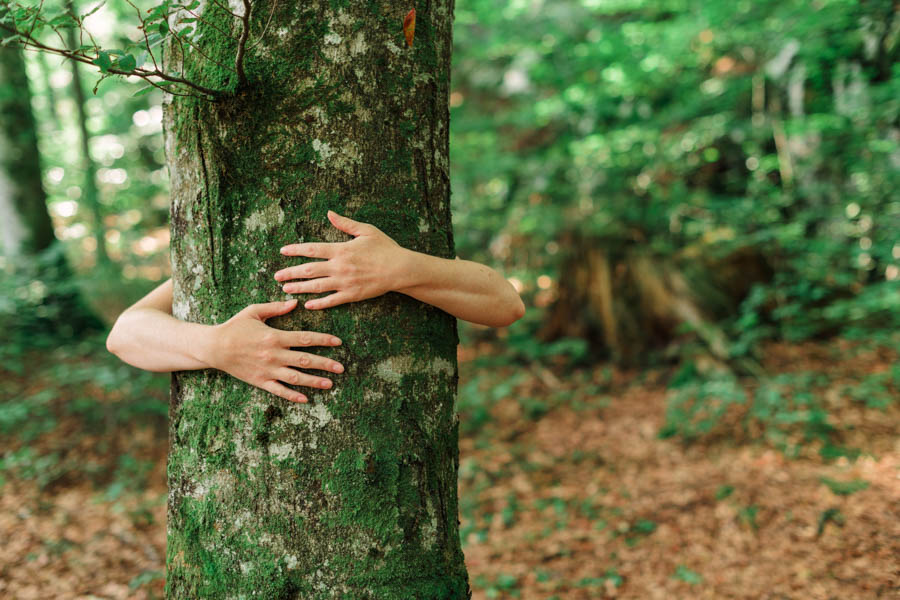Tree Care Tips for Gardeners

How much does gardening knowledge apply to tree care? Some basics are the same, but other aspects are different from what herbaceous perennials and smaller ornamentals need in urban landscapes. Here are tips about some of the most-common tree issues and questions that I see in my professional work as a consulting arborist:
How deep to plant a tree? Planting may be the most important moment in a tree’s life, at least for its long-term health. In my experience, trees are usually too deep in nursery pots, so the common advice to plant a tree at the same level as it was in the nursery pot usually leads to problems. When trees are planted too deep, it may result in lifelong stress and health problems for the tree. Lack of vigor, slow growth, insect pests, root rot, and/or other diseases years later are rarely connected with the original incorrect planting.
To dig a planting hole for a tree, you first need to know depth of the tree’s roots. A tree should be removed from its nursery pot, loose soil gently removed from below the roots, and soil removed from the top of the root ball down to the root crown, which is usually where the first significant roots connect to the main trunk(s). The hole you dig to plant the tree may be much more shallow than you expected, in some cases only a few inches deep, with root crown at grade. Soil should be compacted at the bottom of a planting hole to prevent soil settling and the tree sinking after planting. A small area of soil compaction directly below a tree won’t cause significant problems, but a tree that sinks to even a few inches into soil during the weeks after planting may have lifelong problems. Back fill with the same soil, and add amendments as top-dressing only.
How to water a tree? Watering problems and inappropriate watering may be the most common cause of tree decline and health problems for urban trees. For the vast majority of trees, soil should remain dry as much as possible from the trunk to the drip-line, literally where rain drips at the edges of the canopy. Water deeply and occasionally at the drip-line, where most trees grow roots for absorbing water (that is where they water themselves when it rains). Watering trees with sprinklers is almost always problematic for trees and often encourages root root and leaf diseases, especially when sprinklers hit tree trunks or upper soil near main roots is frequently moist. Shallow tree roots, some root-infrastructure problems, and some tree failures are associated with watering trees using sprinklers.
Does your tree trunk disappear into soil with no sign of roots? The vast majority of trees grow buttressing roots, major roots extending outward from the main trunk(s) with about half of the roots visible above ground for a distance from the trunk. When no main roots are visible, this is informally called “telephone poling” by arborists because the appearance can be like a telephone pole disappearing into the ground. This indicates that the tree is likely stressed and may be prone to disease or decline. Excavating roots carefully to avoid damage so that main roots are visible may reduce tree stress, allow roots to breath, reduce likelihood of infection by root pathogens, and improve overall tree health.
How much can I trim from a tree at one time? Normally about 10% to 15% of a tree’s total leaf surface, in some cases more or less depending on various factors such as species, tree health, and tree age. The tree feeds itself with sunlight gathered with leaves. When too many leaves are removed, the tree might not be able to produce enough energy for all of its needs and functions such as growth, blooming, fruiting, and maintaining a strong immune system. A single severe topping may lead to years of decline and health problems that often aren’t connected to the trimming. Most deciduous trees can be trimmed more aggressively while dormant.
How much mulch? Organic mulch is great for trees but should be kept away from tree trunks and major roots. I recommend leaving soil completely bare for a distance of about 3 times the diameter of a trunk or root.
Nutrients, amendments, and fertilizing: Urban trees often lack sufficient nutrients – especially when no one is providing amendments or fertilizer. Nitrogen and sulfur in particular are often deficient in Southern California soils. A soil test is important to understand exact nutrients needed, and to identify possible metal toxicities and other toxicities in soil. While exact needs vary by species, most trees do best with either a thriving soil ecosystem in a forest-like environment with abundant organic matter and neighboring plants, or organic mulch with direct addition of sufficient amendments and nutrients.
For more information on tree care, see the Gardenerd.com page for the Sep 2019 podcast interview with Darren Butler or listen directly to the podcast.
For information on care of citrus trees see: